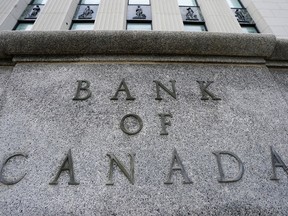Article content
The Bank of Canada pulled an RBA and hiked rates on June 7 with the market mostly (call it 60-40) priced for no move and more than 80 per cent of Bay Street economists believing the central bank would hold its fire. This is the same Bank of Canada that surprised the markets at half the meetings in 2022, so it really is back to governor Tiff Macklem’s modus operandi.







Comments
Postmedia is committed to maintaining a lively but civil forum for discussion and encourages all readers to share their views on our articles. Comments may take up to an hour for moderation before appearing on the site. We ask you to keep your comments relevant and respectful. We have enabled email notifications—you will now receive an email if you receive a reply to your comment, there is an update to a comment thread you follow or if a user you follow comments. Visit our Community Guidelines for more information and details on how to adjust your email settings.
Join the Conversation